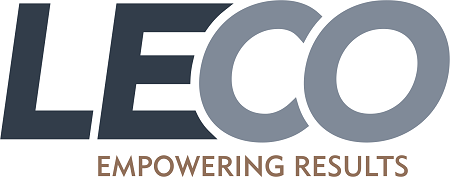Government-subsidized farm fuels are often dyed to differentiate them from consumer diesels. "Fuel-washing" is performed to remove the dye from the fuel before being sold at a higher price, but it is a major concern for several law enforcement, tax, and regulatory agencies.
A new fuel marker called Accutrace S10 has been manufactured for use in the United Kingdom. This dye cannot be removed easily and can be detected at low concentrations, preventing illegal reselling and dilution of fuel.
The UK agency HMRC (Her Majesty's Revenue and Customs) requires advanced fuel marker analyzers to have the ability to quantitate the fuel marker in diesels that have been diluted by up to a factor of 100. This requirement is easily met by Pegasus® BT in less than 15 minutes, without the need for any additional sample preparation.
Experimental Framework
Accutrace S10 was purchased from LGC and added to commercially available diesel samples. The samples were then examined with full mass range acquisition on a unique bench-top GC-TOFMS system.
ChromaTOF® brand software was employed to detect the fuel marker in matrix at low ppb concentrations, using peak finding with both deconvolution and Target Analyte Find features. Table 1 shows GC-TOFMS (Pegasus BT) conditions.
.jpg)
Figure 1. The full TIC chromatogram of a spiked commercial diesel sample is shown along with a deconvoluted Peak True spectrum for the fuel marker compound. The zoomed inset shows a characteristic mass trace of the fuel marker, Accutrace S10, at a concentration of 500 ppb, the required detection limit for a roadside analyzer.
Table 1. GC-TOFMS (Pegasus BT) Conditions
| Gas Chromatograph |
Agilent 7890 with Agilent 7693 Liquid Autosampler |
| Injection |
1 µL injection, Pulsed Splitless @ 250°C |
| Carrier Gas |
He @ 1.4 mL/min, Constant Flow |
| Column |
Rxi-5 ms, 15 m x 0.25 mm i.d. x 0.25 µm coating (Restek, Bellefonte, PA, USA) |
| Oven Program |
50°C (1.5 min), to 320°C @ 34°C/min (4 min) |
| Transfer Line |
250°C |
| Mass Spectrometer |
LECO Pegasus BT |
| Ion Source Temperature |
250°C |
| Mass Range |
35-650 m/z |
| Acquisition Rate |
10 spectra/s |
Results and Discussion
Automated deconvolution was initially used to process the samples in order to detect the fuel marker in matrix. Although there is no NIST library spectrum for Accutrace S10, full mass range spectral information and retention time correlation with the neat standard were used in tandem to accurately identify the fuel marker compound.
.jpg)
Figure 2. The deconvoluted Peak True mass spectrum of the Accutrace S10 peak is shown above, with major fragments labeled.
In order to develop a quantitation method, the Target Analyte Find was employed to selectively and quickly detect the fuel marker peak and quantitate it on m/z 315.18. The data processing technique detected the fuel marker with S/N higher than 10 at level as low as 10 ppb in matrix. This level is 2.5 times more sensitive than the minimum detection level of 25 ppb expected in an advanced analyzer by HRMC.
The dynamic range covers the entire range of 100% subsidized fuel at 2500 ppb to less than the 1% dilution of subsidized fuel at 10 ppb. This is depicted in calibration curve shown in Figure 3.
.jpg)
Figure 3. The excellent quantitative ability of the Pegasus BT is demonstrated in this linear calibration curve for the fuel marker, Accutrace S10. Concentrations ranged from 10ppb up to 2500ppb, with each concentration represented in triplicate.
Conclusion
Spiked diesel samples were examined in runs of less than 15 minutes without using any additional separation techniques or sample preparation, such as heart-cutting or additional distillation. This enables quantitation in the concentration range of 2500 ppb to 10 ppb, corresponding to levels of 100% subsidized fuel to below 1% subsidized fuel.
This exceeds the quantitation range set by HRMC on the Pegasus® BT (Figure 4). This quick and easy analysis is also quantitative and can be a powerful tool in the war to end fuel-washing.
.jpg)

This information has been sourced, reviewed and adapted from materials provided by LECO Corporation.
For more information on this source, please visit LECO Corporation.